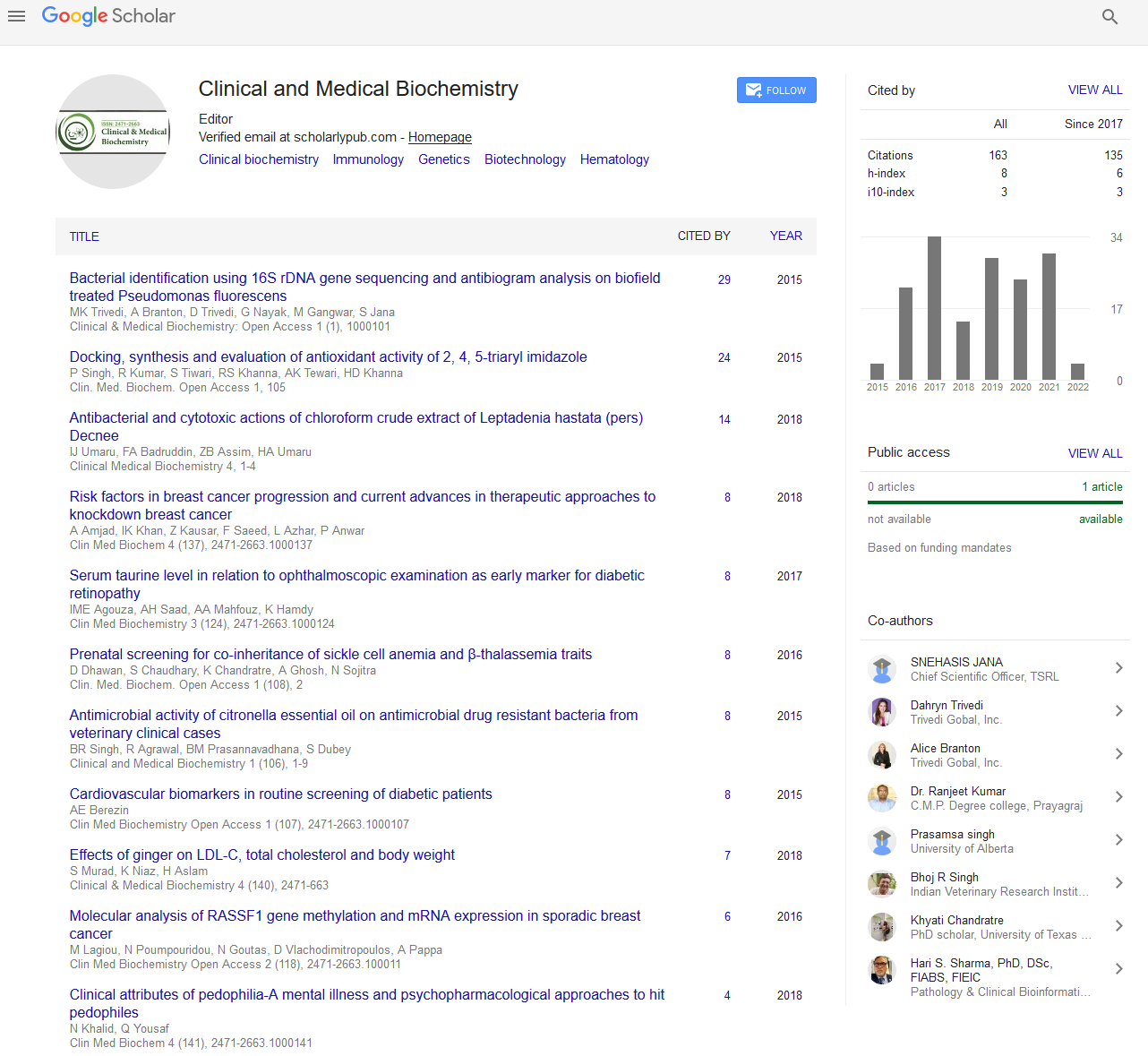Indexed In
- RefSeek
- Directory of Research Journal Indexing (DRJI)
- Hamdard University
- EBSCO A-Z
- OCLC- WorldCat
- Scholarsteer
- Publons
- Euro Pub
- Google Scholar
Useful Links
Share This Page
Journal Flyer

Open Access Journals
- Agri and Aquaculture
- Biochemistry
- Bioinformatics & Systems Biology
- Business & Management
- Chemistry
- Clinical Sciences
- Engineering
- Food & Nutrition
- General Science
- Genetics & Molecular Biology
- Immunology & Microbiology
- Medical Sciences
- Neuroscience & Psychology
- Nursing & Health Care
- Pharmaceutical Sciences
Abstract
Urinary Soluble Chemokine (C-X-C Motif) Ligand 16 (CXCL16) and Urinary Neutrophil Gelatinase Associated Lipocalin (NGAL) as Biomarkers of Activity in Children and Adolescents with Lupus Nephritis
Mohamed A El-Gamasy, Maher Abdelhafez and Hend Abdelnabi
Objectives: One of the challenges of treating patients with lupus nephritis (LN) is to assess disease activity and predict its outcome. Since renal biopsy cannot be performed routinely, early biomarkers are needed. The aim of this study was to measure urinary Neutrophil Gelatinase Associated Lipocalin (NGAL) and urinary soluble chemokine (C-X-C motif) Ligand 16 (CXCL16) levels in children and adolescents with Systemic lupus erythematosus (SLE) and investigate whether they are elevated in active LN.\r\nMethods: The study was conducted on 80 patients diagnosed as SLE by Systemic Lupus International Collaborating Clinics (SLICC) criteria and 60 apparently healthy subjects as controls. Global and renal disease activity was evaluated by Systemic Lupus Erythematosus Disease Activity Index (SLEDAI) and r SLEDAI respectively. Urinary NGAL and Urinary CXCL16 were measured for all subjects by ELISA. Renal biopsy was done for all cases at initial diagnosis and was graded using ISN/RPS classification.\r\nResults: Urinary NGAL and CXCL16 were higher in patients than in the controls. Their levels were higher in patients with LN than those without LN. Urinary NGAL had higher sensitivity and specificity than urinary CXCL16 as early predictor of LN. There were significant positive correlations between urinary NGAL levels and 24 hour urinary proteins and SLEDAI and there were also significant positive correlations between urinary CXCL16 levels and 24 hour urinary proteins and SLEDAI.\r\nConclusions: uNGAL and CXCL16 were reliable indicators of the activity of LN pointing to the underlying renal pathology.


